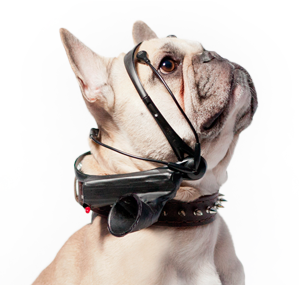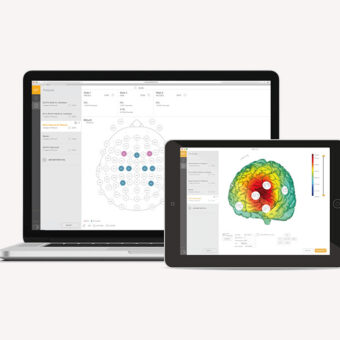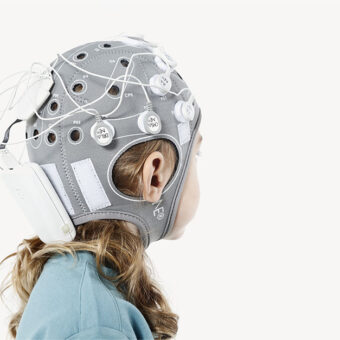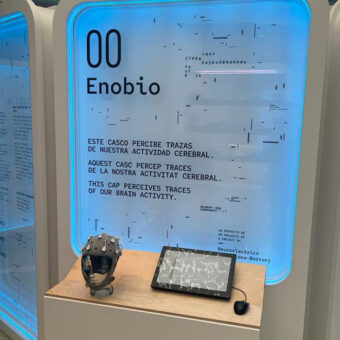As we know, the main uses of EEG include diagnosis and neurofeedback therapy (including BCI). Theses applications falls into the clinical realm, but there are many more applications, some of them quite strange to say the least.
One important point before starting this post: EEG and BCI are nowadays mainly used for clinical purposes, but … what about healthy users? Can EEG and/or BCI provide interesting applications to this target segment? I think so. First of all because EEG devices are more and more available, they are getting cheaper and they are becoming smaller, wireless and easy to set up. That makes the user’s acceptance increase. On the other hand, there are already many applications focusing on healthy users as I will show in this post.
1 – EEG Sonification
This has already been covered in this other blog post but I would like to give some other interesting examples.
The Brain Orchestra made its world premier debut in Prague in 2009. Both music and video are controlled by the performers’ EEG and ECG. The project is the creation of the Synthetic, Perceptive, Emotive and Cognitive Systems (SPECS) group at the University Pompeu Fabra in Barcelona.
EEG sonification is not that new. In this rare video, we can see how John Lennon’s brain sounds. This was showed in The Mike Douglas Show (1972) entitled “Brain Music for John and Yoko: John Lennon, Yoko Ono & Chuck Berry with David Rosenboom.”
More over, there are full albums recorded with EEG such as the one of David Rosenboom “Brainwave Music” (1976). David Rosenboom is an American composer and a pioneer in the use of neurofeedback, cross-cultural collaborations and compositional algorithms.
2 – Augmented reality
This cute invention by Japanese company Neurowear allows you to show your mood with Brain-Controlled “Necomimi” cat ears.
They claim the sensor measures your concentration and relaxation levels and these parameters makes the ears stand up or fall down.
3 – Gaming applications
Some companies are already commercializing gaming applications based on BCI. For instance, Mindflex allows you to “use the power” to move a floating ball through a maze. Isn’t it cool to become a Jedi for a while?
Also, Mindball offers a game in which you have to beat your opponent by relaxing more than him. The idea is that your relaxation level controls a ball that moves toward you opponent. The more you relax, the more chances you have to score a goal. It’s a bit like arm-wrestling with your thoughts.
4 – Brain Painting
This nice application allows to use your brain to paint. There are several approaches to do that. For instance in this example, they use a P300 paradigm to choose color, objects, object size, transparency and cursor movement.
5 – Neuromarketing
This new field of research that is booming worldwide applies neuroscience techniques such as MRI and EEG to study the reactions of users to marketing stimuli. As we know, marketing is an enormous business, whether we like it or not, and thus large investments have been made in this field in the last years. Some companies are mainly focused on neuromarketing services such as Salesbrain and Neuromarketing Labs.
Another interesting term coined in the last years is neuroeconomics. Somehow similar to neuromarketing, neuroeconomics seeks to explain human decision-making by applying tools from neuroscience, behavioral economics, and cognitive and social psychology, among others.
6 – EEG as a lie detector
Back in 2009, for the first time in history, a 23 year old woman was convicted for murder in a trial, using EEG as evidence.
This EEG lie detector works using the P300 paradigm. The idea is the following. Your brain reacts differently when seeing something new or when seeing something known. By presenting pictures of objects in a crime scene, it would be possible (in theory) to prove if somebody has been there or not.
Although the acceptance of using EEG as forensic evidence is in its early stages, iI wouldn’t be surprised to see this brainwave test being more and more used in the years to come.
Another interesting case uses this test to prove the innocence of a person convicted in 1977. The judge did not accept this as evidence and a new trial was dismissed.
7 – Dog Computer Interface
Saving the best for last, or in this case, the weirdest for last, check out this application called “No More Woof”.
Yes indeed, you can now listen your dog speak! As they mention in the article, it isn’t as hard as it seems. The technology is already there, it’s just a matter of applying it to a new field. I haven’t tried it yet, but if someone has, please let me know!
See you next time!




